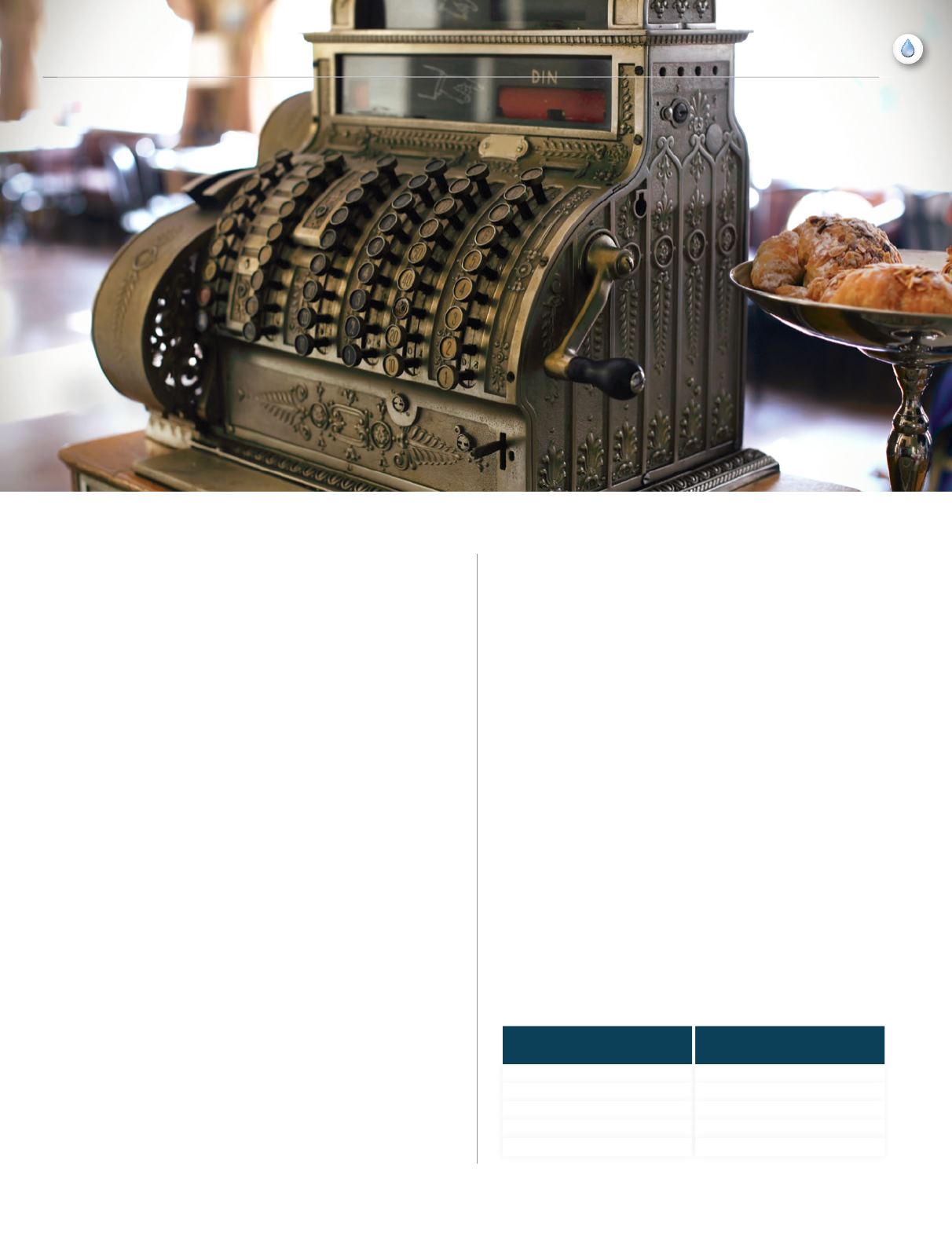

Winter 2015
NCRWA.COM11
feature
T
he water meter has always been thought of as a water utility’s cash
register. But just as a meter helps you properly charge for water use, a
poorly maintained or worn water meter can actually lose you money.
Save your system money and water by keeping your meters in good
repair and by implementing a meter change out program.
To adequately maintain your meter you must first understand how they
work. The most common water meter used for residential customers is
the positive displacement (PD) meter. PD flowmeters measure fluid flow
by precision fitted gears or rotors as flow measuring elements. These
elements have known and fixed volumes that are displaced between the
gears and the rotation of the rotors are proportional to the volume of
the fluid being displaced. These meters work well with viscous fluids
or other fluids with little to no straight run requirements. Two common
methods of positive displacement measuring are Oscillating Piston
meters and Nutating Disk meters. Both methods rely on the water to
physically displace the moving measuring element in direct relation to
the amount of water that passes through the meter. The piston or disk
moves a magnet that drives the register.
PD meters are generally very accurate at low to moderate flow rates
typical of residential and small commercial users, and are common
in sizes from 5/8 of an inch to two inches. Because displacement
meters rely on all water flowing through the meter to “push” the
measuring element, they generally are not practical in large commercial
applications requiring high flow rates or low pressure loss.
Positive Displacement meters normally have a built-in strainer to
protect the measuring element from rocks or other debris that could stop
or break the measuring element. PD meters normally have bronze, brass
or plastic bodies with internal measuring chambers made from molded
plastics and stainless steel. Often brass meters contain anywhere from 5
to 40 percent zinc, which is added for tensile strength.
A positive displacement meter is an accurate way to measure water
flow for your customer but, as is the case with anything with moving
parts, they can wear out. As the meter wears out, it is always to the
customer’s advantage. Meters will usually not read higher but instead
will read lower, thus increasing water loss and a loss of money for the
water system. A good rule of thumb on a meter change out program is
to replace your meter after 10 years or a million gallons, whichever
comes first.
For example, let’s assume a household uses 6,000 gallons a month and
your water system charges $3.00 per thousand gallons. If your water
meter is reading 85 percent, this would result in a loss of $32.40 a year
for this household. Multiply that by the amount of customers you have
and the losses in your revenue can be quite significant.
Other ways meters are losing revenue for water systems are not using
the meter equivalents set by the American Water Works Association
(AWWA). These have been an industry standard for many years;
however, some systems charge one base rate for all meters regardless
of meter size.
feature
By Jesse Miller, Circuit Rider, SCRWA
IS YOUR CASH REGISTER
WORKING PROPERLY?
5/8 x 3/4
3/4
1
1.5
2
1
1.5
2.5
5
8
METER SIZE IN INCHES AWWA METER EQUIVALENT
















